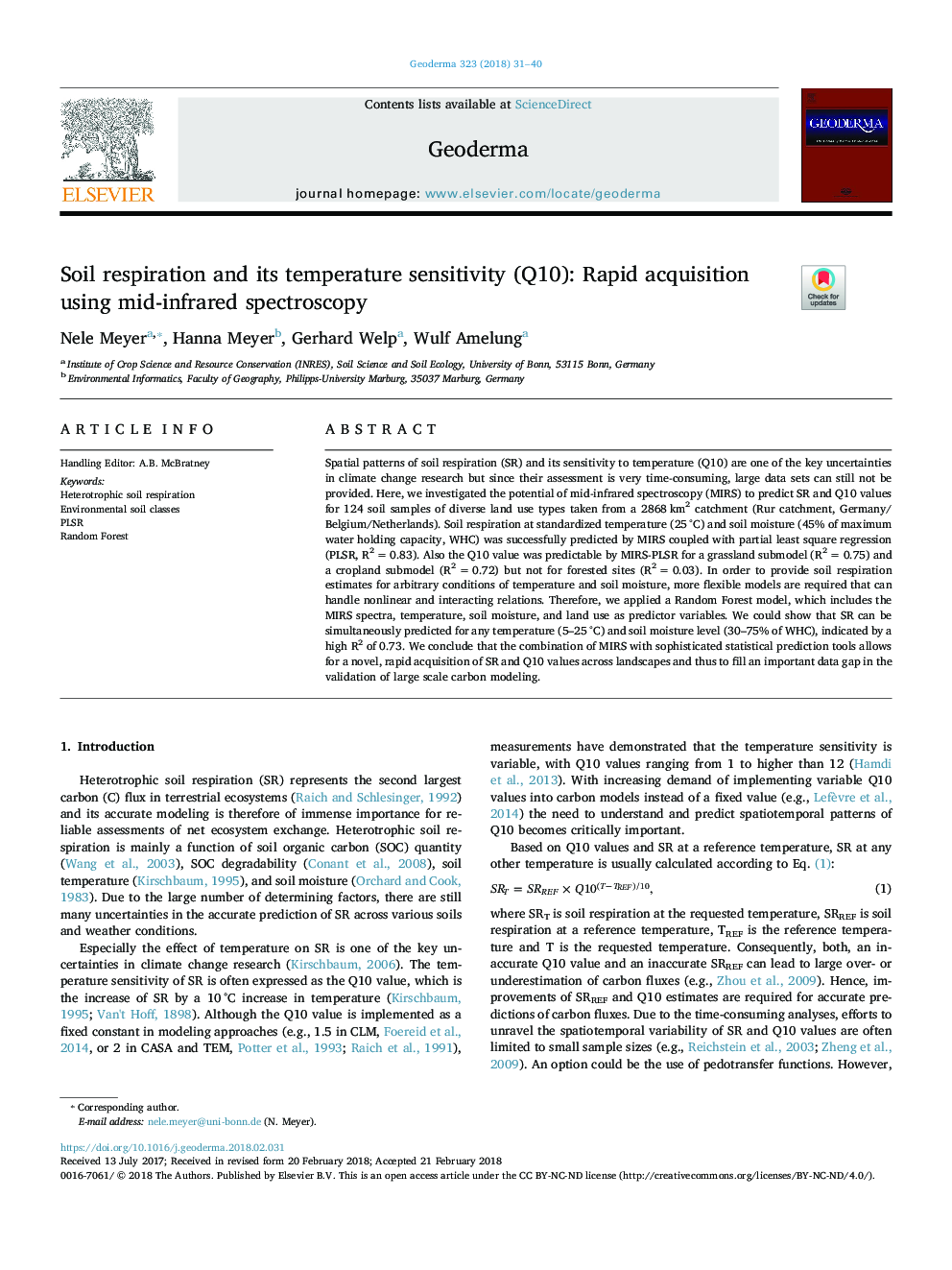| Article ID | Journal | Published Year | Pages | File Type |
|---|---|---|---|---|
| 8894033 | Geoderma | 2018 | 10 Pages |
Abstract
Spatial patterns of soil respiration (SR) and its sensitivity to temperature (Q10) are one of the key uncertainties in climate change research but since their assessment is very time-consuming, large data sets can still not be provided. Here, we investigated the potential of mid-infrared spectroscopy (MIRS) to predict SR and Q10 values for 124 soil samples of diverse land use types taken from a 2868â¯km2 catchment (Rur catchment, Germany/Belgium/Netherlands). Soil respiration at standardized temperature (25â¯Â°C) and soil moisture (45% of maximum water holding capacity, WHC) was successfully predicted by MIRS coupled with partial least square regression (PLSR, R2â¯=â¯0.83). Also the Q10 value was predictable by MIRS-PLSR for a grassland submodel (R2â¯=â¯0.75) and a cropland submodel (R2â¯=â¯0.72) but not for forested sites (R2â¯=â¯0.03). In order to provide soil respiration estimates for arbitrary conditions of temperature and soil moisture, more flexible models are required that can handle nonlinear and interacting relations. Therefore, we applied a Random Forest model, which includes the MIRS spectra, temperature, soil moisture, and land use as predictor variables. We could show that SR can be simultaneously predicted for any temperature (5-25â¯Â°C) and soil moisture level (30-75% of WHC), indicated by a high R2 of 0.73. We conclude that the combination of MIRS with sophisticated statistical prediction tools allows for a novel, rapid acquisition of SR and Q10 values across landscapes and thus to fill an important data gap in the validation of large scale carbon modeling.
Related Topics
Physical Sciences and Engineering
Earth and Planetary Sciences
Earth-Surface Processes
Authors
Nele Meyer, Hanna Meyer, Gerhard Welp, Wulf Amelung,
